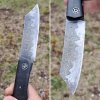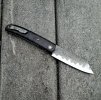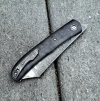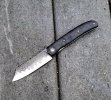Wowbagger
Gold Member
- Joined
- Sep 20, 2015
- Messages
- 8,012
Yes !
One of my favorites is my Case Min Trapper :
Love looking at them and using them .
As with so many older Case factory Images the handles on mine look nothing like this . Though this was what they were trying to sell me on .
Remember Nestles Strawberry Flavored Quick drink mix ? Yeah . . . more like that . Took me a while to adjust to what I took out of the boxes.
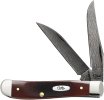
Two other users that I have are the Boker ;

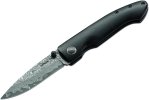
One of my favorites is my Case Min Trapper :
Item No 31304 WR Case And Sons Cutlery Chestnut Damascus Mini Trapper
I wound up buying two of them . Pretty pricy . Now that they are no longer in production I am pretty happy about having two .Love looking at them and using them .
As with so many older Case factory Images the handles on mine look nothing like this . Though this was what they were trying to sell me on .
Remember Nestles Strawberry Flavored Quick drink mix ? Yeah . . . more like that . Took me a while to adjust to what I took out of the boxes.

Two other users that I have are the Boker ;
BOKER PLUS Damascus Gent 1 Pocket Knife
andGent 2
Both are still in production and I bought those more than ten years ago .So nice . The pattern is made with layer(s) of nickel in the mix .The handles are solid ebony with liner locks . Nice thin blades
Last edited:

